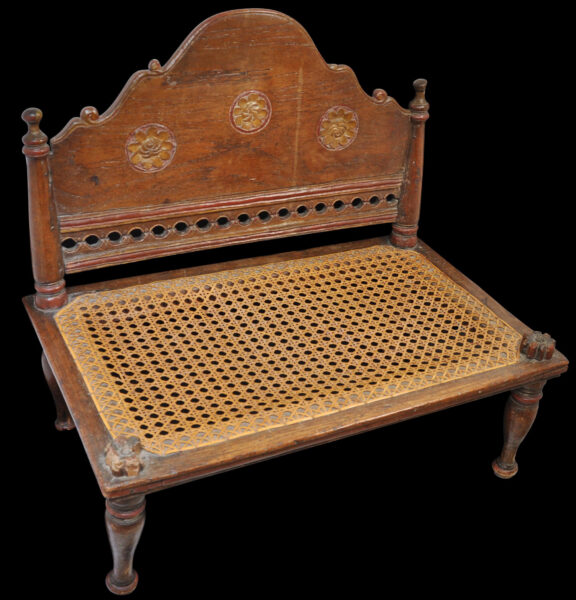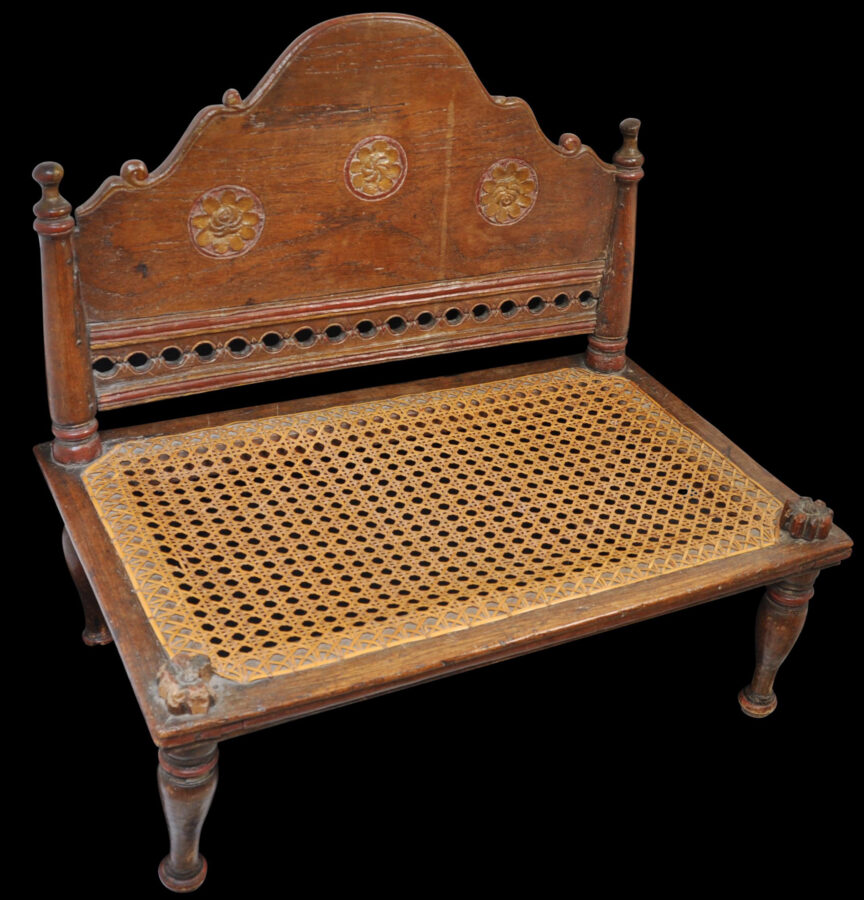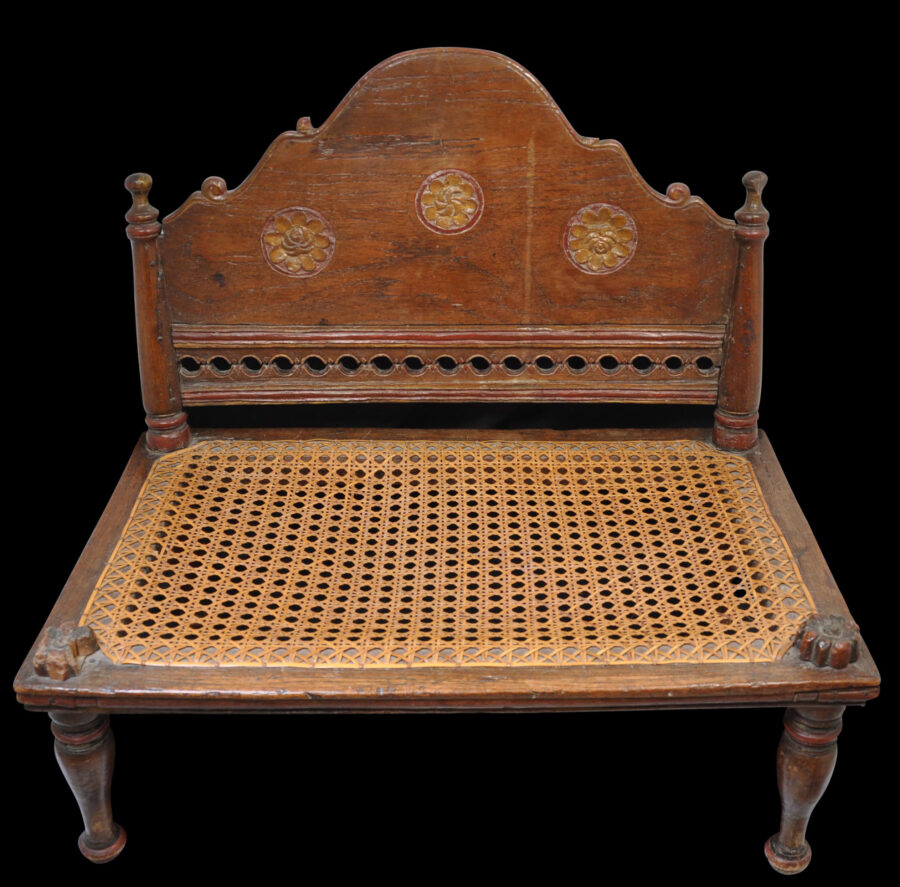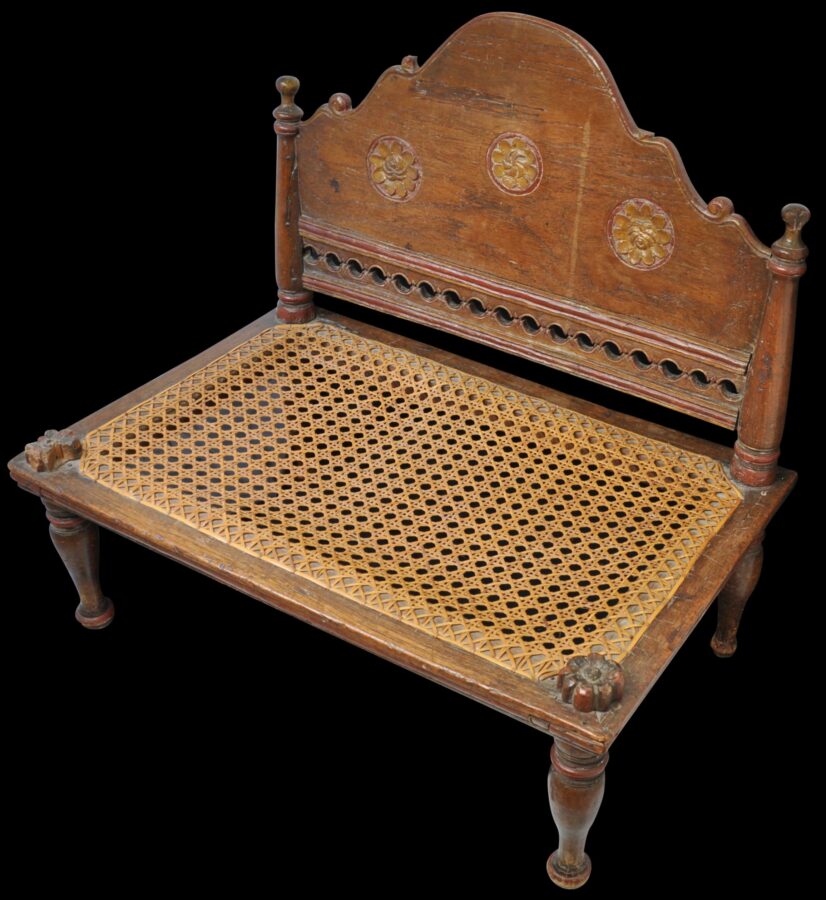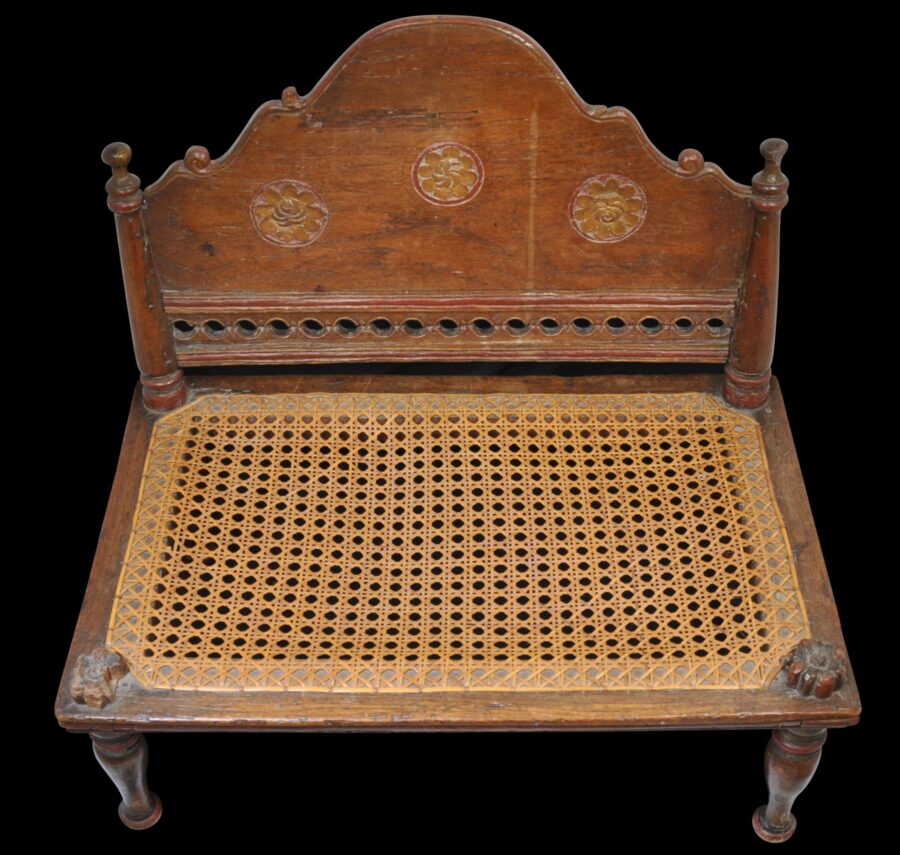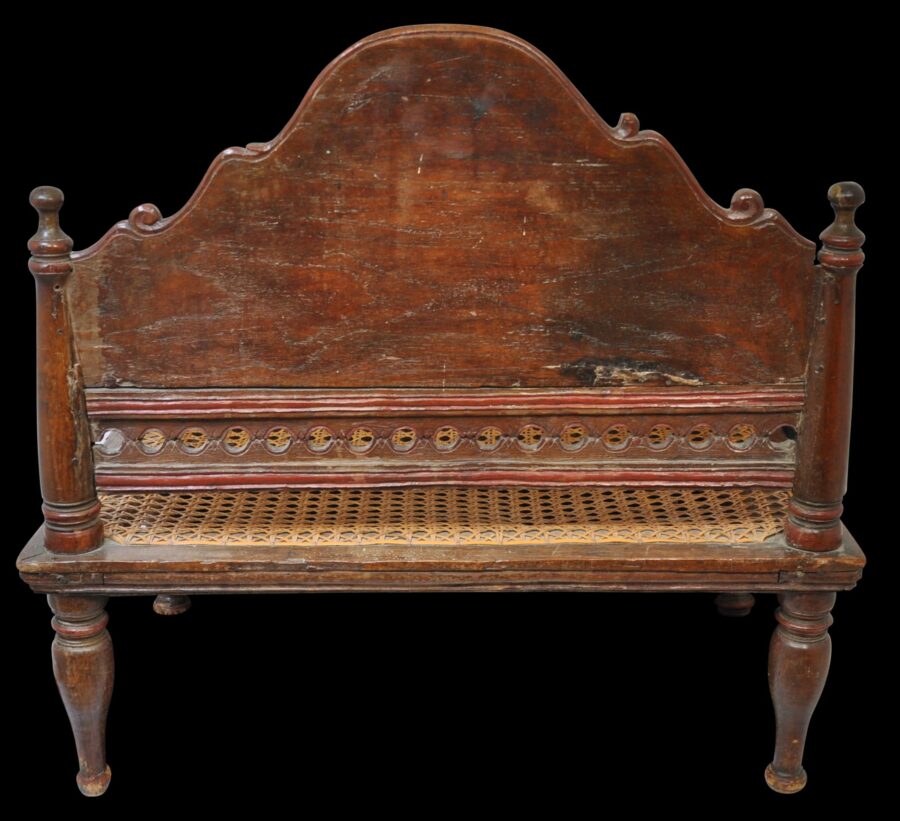This low but wide wooden chair with the original rattan seat was used on Java (and possibly in the Malay world too where Javanese influence spread due to Javanese migration) as part of the circumcision ceremony for a young Muslim boy. The just-circumcised boy would have sat on it in ‘state’, as if a prince for the day.
The low nature of the chair was suitable for a young boy, and the wide seat would have allowed him to sit more comfortably with legs apart, so that his sarong did not settle on his wound.
The backrest of the chair is carved in low relief with three floral roundels, over a lower frieze of open-work roundels. The shape of the backrest itself evokes Mount Meru, the mythical abode of the gods in both Buddhist and Hindu lore, which predates the arrival of Islam to Indonesia and the Malay Peninsula.
The chair sits on four turned legs.
Probably it dates to the 19th century but some elements suggest it might be earlier, perhaps 18th century.
The chair has been carved from local teak, most probably, and has been coloured with red and brown pigments and with traces of gilding.
A similar chair is illustrated in Brinkgreve & Stuart-Fox (2013, p. 160-61). See a related example sold by us to Singapore’s Asian Civilisations Museum.
The chair here is in its original condition. There is some small loss to the carving along the back, and to the front left carved flower motif on the seat, and also a vertical steak to the varnish to the front of the backrest. The age of the chair is very clear and all elements have a good patina.
References
Brinkgreve, F., & D.J. Stuart-Fox (eds), Living with Indonesian Art: The Frits Liefkes Collection, Rijksmuseum Volkenkunde, 2013.


